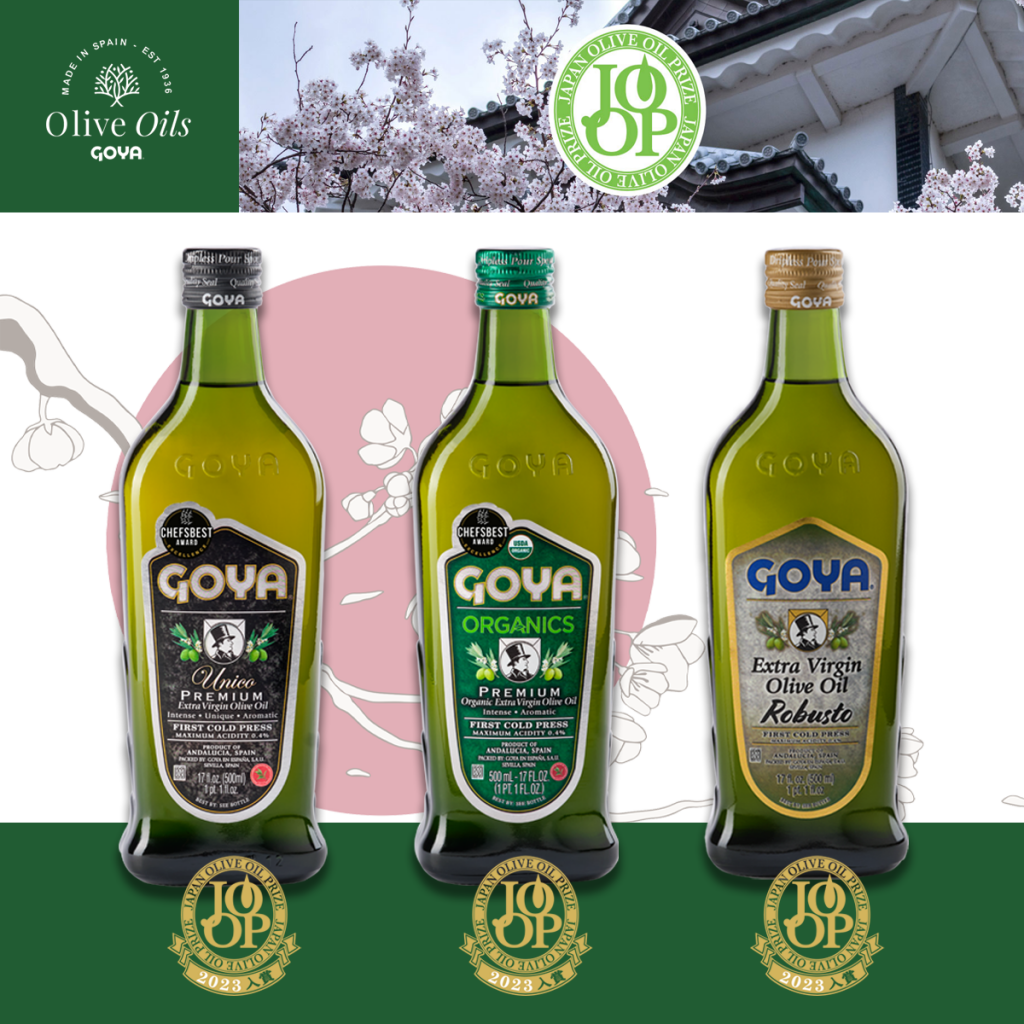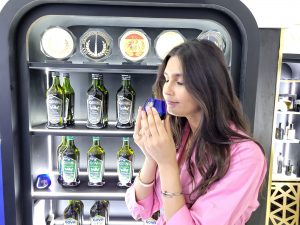
The 8 latest medals won in Japan can be added to the long list of awards that Goya olive oils have racked up. Thus, in the 2023 edition, the Olive Japan Competition awarded Goya extra virgin olive oils with five medals. The contest, organized by the Olive Oil Sommelier Association of Japan (OSAJ), awarded two gold medals to GOYA® Unico and Organics extra virgin olive oils, while GOYA® Robusto/Fruity, Extra Virgin and GOYA® Garlic, in the infused category, were honored with silver medals.
These five medals awarded to Goya EVOOs recognize the brand’s hard work and toil to offer a product with extra quality to the most discerning consumers in the Japanese market.
Run by Toshiya Tada, Olive Japan has a vision and mission of promoting the consumption of extra virgin olive oil among the Japanese public. The 2023 edition had 702 extra virgin olive oils and infused oils submitted from 24 countries.
For its part, the 11th edition of the Japan Olive Oil Prize (JOOP) that is held in Tokyo awarded three gold medals to Goya oils: GOYA® Unico and GOYA® Robusto won the Gold Blend medals, while GOYA® Organics was awarded in the Gold Organic category.
Complete list of winners Olive Japan 2023 | Complete list of winners JOOP Prize
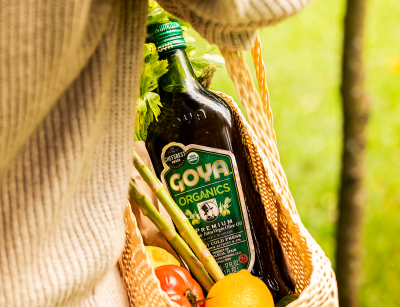
When buying extra virgin olive oil, we often find countless brands with different formats and containers on the supermarket shelves. But which is the best? According to the North American Olive Oil Association, these are the five steps to follow to buy the best olive oil for your family.
1. Label and quality seals
The quickest manner in which to check the quality of the oil is by looking at the label. The label should specify that the oil has been awarded official quality certificates and seals. The bottle may feature a seal indicating the region of origin, or certification seals such as NAOOA (North American Olive Oil Association), which indicate that the brand has agreed to join a program that involves the execution of random testing available for compliance with international purity and quality standards. Goya olive oils are enrolled in the North American Olive Oil Association’s (NAOOA’s) About Olive Oil Quality Seal program.
2. Check the best-by-date
Olive oil is best freshly produced, but it has a shelf life of two years from bottling. Therefore, it is important to check the best-by-date so that we know how long it has been bottled.
3. Buy what you need
Although the best-by-date may be a long way off, olive oil is a natural product that loses properties when exposed to heat, oxygen and light. Thus, the flavor components of extra virgin olive oil can be reduced with prolonged storage. For this reason it´s always best to buy a reasonable amount depending on the intended use.
4. Origin, guarantee of quality
Origin is a requirement included in international labeling standards. It´s usually found on the back label near the nutritional information and and ingredient declaration. At Goya Spain we select the best Andalusian olive oils (a global center of olive oil production) for our coupages and for packaging. What’s more, we don’t package for any other brands.
5. Know the differences between the types of olive oil
As specified by regulatory organizations, in our supermarket we can find two different types of olive oils according to the intensity of flavor: extra virgin olive oils and classic olive oils (olive oil and light flavor olive oil).
These keys will allow you to choose the best olive oil to buy; you just have to choose the one that best suits your needs and tastes, and start enjoying its properties in your dishes and recipes.
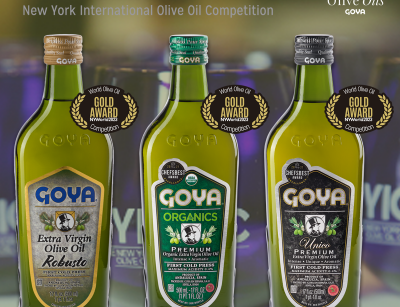
- GOYA® Unico, Organics and Robusto Extra Virgin Olive Oils were awarded 3 gold medals.
- With these three awards, Goya’s track record at this competition leaps to a total of 16 gold medals won in the last six years.
- For the first time, the 2023 NYIOOC Competition was divided into hemispheres. Over 1000 samples were submitted in the Northern Hemisphere, with a notable number of organic olive oils.
For the sixth year in a row, the New York International Olive Oil Competition (NYIOOC) once again recognized the extraordinary quality of Goya Extra Virgin Olive Oils. As such, the premium extra virgin olive oils GOYA® Unico, Organics and Robusto won three gold medals at the 2023 edition.
Goya Spain is home to the brand’s factory for olive oils, olives and capers. The factory is located in Alcalá de Guadaíra (Seville, Andalusia) and has become a world leader in the manufacture and export of these products from Spain. With these three awards, Goya has now been honored with 16 gold medals at the 2023 NYIOOC Competition. We are also celebrating the fact that GOYA® Extra Virgin Olive Oils have now won more than 260 awards at competitions and contests around the world.
As the General Manager of Goya Spain, Antonio Carrasco, highlights, these three gold medals are “a reward for our consistent hard work to offer consumers extra virgin olive oils produced from olives grown in groves in southern Spain”, adding that “Thanks to our raw materials and, despite the ongoing scarcity of rainfall throughout the season, we were able to offer a superior olive oil.”
The CEO of Goya Spain stated that “we are extremely proud that the NYIOOC Competition awarded GOYA® Organics, our organic extra virgin olive oil.”
About Goya EVOOs
GOYA® Unico Extra Virgin Olive Oil is the result of meticulously selecting the very best Hojiblanca and Picuda varieties in Andalusia (Spain). GOYA® Unico olive oil provides a sensory experience with an intense aroma of fresh herbs, fruit trees and tomatoes. The fruity green aroma has prominent notes of almond, tomato and apple.
On the other hand, GOYA® Organics Extra Virgin Olive Oil is created from a perfect coupage of Hojiblanca and Picuda varieties from Andalusia (Spain), ensuring an extraordinary sensory experience: an intense and fruity green aroma, with notes of grass and green leaves, hints of tomato, apple, green almond and artichokes, with an elegant balance in the mouth.
Last but in no means least, GOYA® Robusto oil is produced from the Hojiblanca and Arbequina olive varieties. Robusto of Andalusia (Spain) evokes hints of freshly-cut grass, leaves, aromatic herbs, green tomato and artichokes for consumers. The sensation of freshness stands out due to the intensity of the olive oil, which provides a sweet and pleasant taste on the palate. GOYA® Robusto is a highly balanced olive oil, with a sweetness as it enters the mouth, and an intense green aroma.
About the 2023 NYIOOC Competition
Organized by the industry publication the Olive Oil Times, the NYIOOC Competition is one of the main world contests and its results are considered to be the most prestigious guide to olive oils and their producers. Its panel of judges is made up of experts who follow a technical protocol to analyze each oil with respect to its characteristics and sensory qualities.
For the first time at the 2023 edition, the competition was divided by producers’ origins into the Northern and Southern Hemispheres. A total of 1084 samples were submitted in the Northern Hemisphere, with a high presence of organic oils (nearly 50%).
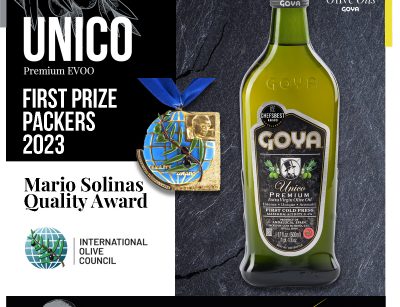
The International Olive Council (IOC) has published the winners of the 23rd edition of the Mario Solinas Quality Award. Thus, out of the seven categories established, Goya Spain took 1st prize in the Packers category for extra virgin olive oils for its GOYA® Unico Extra Virgin Olive Oil.
GOYA® Unico, premium coupage packaged by Goya Spain, is the result of meticulously selecting the very best Hojiblanca and Picuda varieties in Andalusia (Spain). Unico provides a sensory experience with an intense aroma of fresh herbs, fruit trees and tomatoes. The fruity green aroma has prominent notes of almond, tomato and apple.
“We are extremely proud of receiving this award from the International Olive Council, which has recognized the dedication of Goya Spain since it was founded in 1974, for packing extra virgin olive oils made from the best olives harvested from groves in the south of Spain,” stated General Manager of Goya Spain, Antonio Carrasco.
260 International Awards
Including the Mario Solinas Quality Award, Goya Spain extra virgin olive oils (factory located in Alcalá de Guadaíra (Seville) and a leader and benchmark in oil and olive production in Andalusia) have now been honored with 260 awards and recognitions from international contests and competitions. At present, during the 2022/23 season, GOYA® Unico has won—among others—gold medals at international competitions in Los Angeles, New York and Japan (JOOP Prize), 1st prize for Best Oil in the category of Packers/Marketers at the ESAO Awards and they were ranked as the Best Coupage in Spain by the IberOleum Guide.
Every year, the Mario Solinas Quality Award recognizes the quality of extra virgin olive oils, which represents a unique opportunity to provide visibility and prestige to the producers awarded in international markets. A total of 117 samples from Argentina, Brazil, China, Croatia, Greece, Italy, Portugal, Spain, Tunisia and Türkiye were submitted to the 2023 edition.
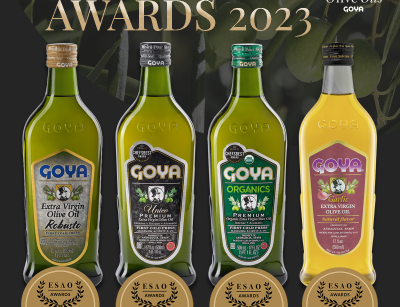
GOYA extra virgin olive oils are in luck. This is confirmed by the four awards won in the 7th Edition of the ESAO Awards (Campaign 2022-2023), which are granted every year by the Olive Oil School of Spain.
In the 2023 edition, the ESAO Awards recognize a special category “Packager/Trader”. According to the Olive Oil School, “these are the awards aimed at recognizing the best extra virgin olive oils of those companies or individuals who sell an existing or manufactured EVOO, but with their brand as a bottler”.
- GOYA® Unico 1st prize Best Extra Virgin Olive Oil – Packager/Trader.
- GOYA® Organics, 2nd prize Best Extra Virgin Olive Oil – Packager/Trader.
- GOYA® Robusto, finalist Best Extra Virgin Olive Oil – Packager/Trader.
In the category “Best olive oil seasoning (for condiments, flavored or infused oils where the base is virgin or extra olive oil will be valued)”, GOYA® Garlic is 2nd prize Best olive oil seasoning.
The ESAO Awards recognize year after year the efforts of olive oil companies, producers and mills to offer the highest quality olive oil. The 2023 edition has included the participation of extra virgin olive oils from eleven countries.
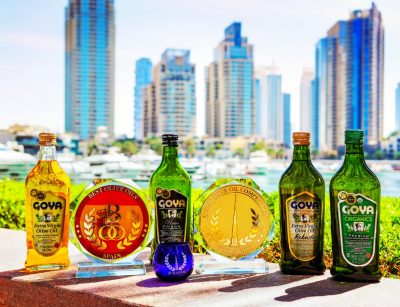
From February 20 to 24, GOYA olive oils have been present at the Dubai Gulfood Trade Show. Thanks to the Dubai World’s Best Olive Oil Competition, we have been able to show in the Best Olive Oil Store stand our extra virgin olive oils: Organics, Unico, Robusto and Extra Virgin.
Here you can see our presence at the trade show.
People at Gulfood could know our four sensory profiles with which GOYA brings a special flavor to recipes and preparations in international cuisines.
Recognized for their quality and unique flavor, Goya extra virgin olive oils are 100% Spanish and have won more than 200 international awards.
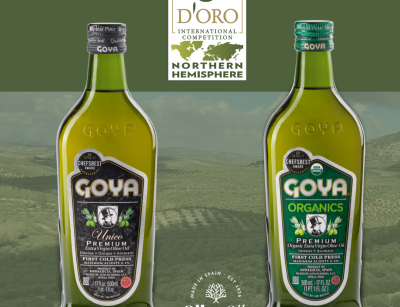
Goya premium extra virgin olive oils have received two mentions in the XXI edition of the Sol d’Oro International Competition (Northern hemisphere) held in Verona (Italy).
Goya Unico has obtained a great mention in the Medium Fruity category and Goya Organics, in the Organic extra virgin olive oils category.
The XXI Sol d’Oro Competition was attended by 409 registered samples from Albania, Chile, Croatia, Greece, Italy, Peru, Portugal and Spain.
Created with the aim of promoting the best extra virgin olive oils, the Sol d’Oro competition combines blind tasting with the assessments of an international jury chaired by Marino Giorgetti. Sol d’Oro has two editions for extra virgin olive oils from the Northern and Southern Hemispheres.


GOYA® Organics has obtained a new extra gold medal at the International Organic Competition BIOL Prize 2023, one of the most renowned organic EVOO competitions worldwide.
Organics is a perfect coupage of the Hojiblanca and Picuda varieties. With an intense, fruity green aroma and notes of grass and green leaves, hints of tomato, apple, green almond and artichokes, it is perfect for using in vegetarian or vegan dishes due to its sensory and health properties.
The 28th edition of BIOL saw the participation of around 300 companies and 440 oils competing: 60 from outside Europe, 150 from Europe and 230 from Italy.

Collection.
Depending on the location and variety of olive, the olives are harvested between the months of October and February.
Transport to the olive oil mill and selection.
Once harvested, the olives are transported to the oil mill to begin the production process. This process must be as quick as possible to avoid deterioration to the fruit. Once in the mill, the olives are cleaned of impurities (leaves, stones, mud, etc.), weighed and stored for the shortest possible time in hoppers.
Pressing.
Pressing is the process of crushing the olives to extract the oil. Pressing produces a paste containing oil, pomace (solid residue of the stone, pulp and skin) and alpechín (vegetable water) from which the oil will later be extracted.
Spinning.
The oil is then washed with water and separated from the water by using a centrifuge.
At the factory: filtering-storage-making coupages-packaging
Finally, once the oil has been produced, it is filtered and stored in tanks, eliminating impurities by decanting.
The oil from each tank is chemically and organoleptically tested, to finally make of our coupages. Depending on the results, it is classified into different categories for bottling.
At Goya España we bottle four different extra virgin olive oils (GOYA® Organic, Unico, Robusto and Extra Virgin), a flavored extra virgin olive oil (GOYA® Garlic) and two other olive oils (GOYA® Puro and Light Flavor).

